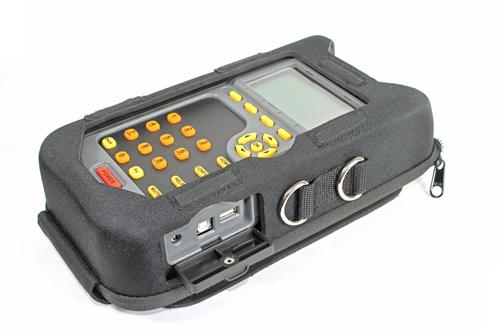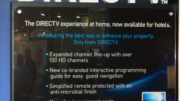OK, commercial installers. It’s time for some straight talk. I know that there are people out there who do only a few DIRECTV installs a year. After all, AT&T has their own home services provider fleet and that means they have most residential installations covered. The only people doing their own installations are commercial customers and those dealers who do their own installs for residential customers. It’s getting rare.
That doesn’t excuse you from having the right tool for the job.
Do you have an AIM meter?
I talk to a lot of installers. (What, you thought I just sat here and blogged all day?) I help them diagnose problems on site. The first question I ask, if they’re DIRECTV installers, is “Do you have an AIM meter?” If the answer is yes, I know I can help them. If the answer is no, I’m not always sure I can.
Why get an AIM meter?
The Advanced Installation Meter from AT&T is more than just a satellite meter. In a lot of ways it’s a tech in a box.

No, I said “tech in a box.”
The AIM has a guided setup mode that actually tells you how to install a dish. When you’re diagnosing, it tells you what you’re doing right and wrong and helps you figure out what the problem is. There’s so much support stuff baked into this meter, it’s almost unfair. For a device designed to aid professionals, it almost treats you like an amateur. And really, that’s the sort of support you need if you don’t do a lot of installs. DIRECTV satellite installations are very different from any other RF installations. You need a lot of specific knowledge and only the AIM comes preloaded with it.
Any dish, any time, any place
It doesn’t matter if you’re looking at a 15-year-old round dish, a fancy new 4K dish, an RV dish or a mobile dish. There’s only one meter that can help you peak them all. Most meters don’t handle SWM technology, DIRECTV’s most common install. Only one meter will let you peak the new Digital SWM dishes and the Reverse Band dishes. That’s the AIM. As they say in the advertising game, accept no substitutions.
Only the AIM meter can actually tune different transponders, which is really important if you’re trying to figure out where problems lie. If your customer calls you complaining that they can’t get HGTV, you need to know if it’s coming in on the dish. An AIM meter, combined with a spreadsheet compiled by loyal volunteers, will help you test the right transponder. If there’s no signal on that transponder, it could be a bad LNB. If there is signal but still problems, it could be an issue with the cable. Without an AIM you won’t even know where to start
Seriously. Don’t eBay
There are a decent number of AIMs on sale on eBay and other secondary markets. You have no guarantee if these meters work or if they were stolen by ex-AT&T techs. When you get an AIM from Solid Signal you’re getting a brand new part that is warrantied and certified. You can’t say that with something you get somewhere else.




